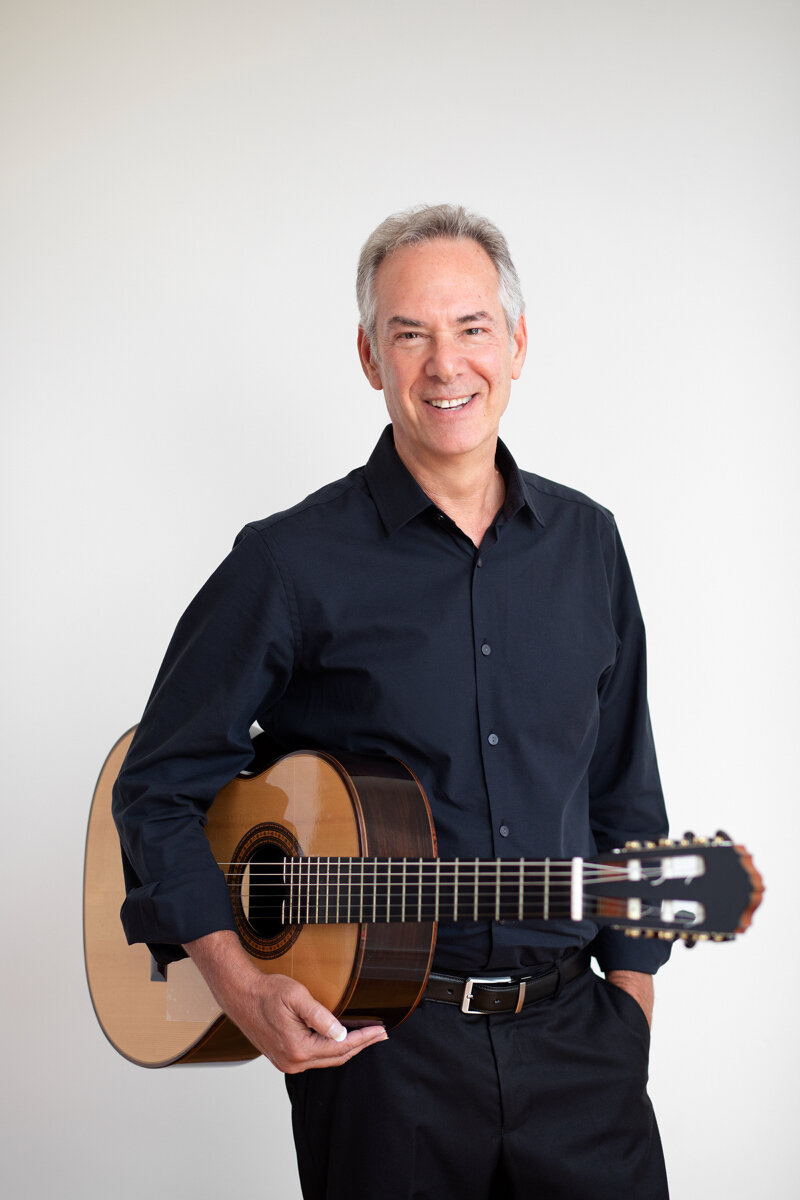A recurring theme in my studio in the coaching of musicianship is the identification and interpretation of the hemiola. As normally understood, a hemiola, through a specific articulation or harmonic pattern, renders two measures of simple triple time, say 3/4, as three shorter measures of duple time (2/4). The resultant effect of a four-bar sequence sounds like: 1-2-3, 1-2-3, 1-2, 1-2, 1-2.
I prefer to think of the three short 2/4 bars as one large bar of 3/2. This correlates better with the other common form of the hemiola, that which takes place inside the bar: the familiar alternation of 6/8 and 3/4 (think the chorus of West Side Story's "America"). There are numerous examples of this effect, particularly in music of Latin America. A familiar guitar example is the Joropo from Merlin's Suite del Recuerdo. My purpose here, though, is to explore the multiple-measure version a bit more closely.
The effect is easy to find in musics of all periods and styles. We see it constantly in the works of Bach. He uses it, normally, to preface a cadence. Look for it in the two bars before the final bar of a section or major cadence. Note the clearly propulsive effect this metric shift has on the music's motion towards the cadence. I'll offer a few examples.
I prefer to think of the three short 2/4 bars as one large bar of 3/2. This correlates better with the other common form of the hemiola, that which takes place inside the bar: the familiar alternation of 6/8 and 3/4 (think the chorus of West Side Story's "America"). There are numerous examples of this effect, particularly in music of Latin America. A familiar guitar example is the Joropo from Merlin's Suite del Recuerdo. My purpose here, though, is to explore the multiple-measure version a bit more closely.
The effect is easy to find in musics of all periods and styles. We see it constantly in the works of Bach. He uses it, normally, to preface a cadence. Look for it in the two bars before the final bar of a section or major cadence. Note the clearly propulsive effect this metric shift has on the music's motion towards the cadence. I'll offer a few examples.
Here, in the Courante to Lute Suite BWV 995, the tipoff is the continuation of the harmony at the end of m10 into m11, only to then shift to the i-iv-V turnaround on what becomes beat three in the hemiola:
The next three examples are from Lute Suite BWV 996. In this one, from the end of the Prelude, the clue is the most common one: a strong third beat, tied over the barline, combined with a strong second beat in the second of the two measures in question:
In this one, from the first section of the Courante, we see a highly complex, often obscure-sounding passage rendered clear by the recognition of the embedded hemiola. Here again the tipoff is the harmonic motion. Note that the V harmony (in B) carries over the bar:
This final Bach example provides the clue to the underlying motion in the Sarabande:
The hemiola is a native component of the music of Latin America, with roots going back both to Iberia and Africa. These two examples from the Ponce Preludes indicate, first, an easy alternation between the two meters, and second, the simultaneous presence of both meters, another common iteration:
Prelude 1
Prelude 7
(Note the hemiola in the treble while in the bass, the original 3/4 is sustained throughout.)
This passage in the opening section of Barrios' Vals Op. 8, No. 3 is often played without metric inflection. However, a hemiola treatment is highly effective (measures 2 & 3 in example):
This example, from Lauro's Maria Carolina, shows the opening of the B section. While the A section is unquestionably in 3/4, this section falls squarely into 3/2, a feel it sustains throughout the section:
Here, in Brouwer's Étude Simple No.XIX, the composer presents hemiola figures unambiguously by means of beaming over the barline, a common feature of more recent scores:
Finally, in this example, a difficult, often incorrectly interpreted passage in the Gigue from Martin's Quatre Pieces Breve, the sense of it is easily grasped if it is seen as a simple hemiola:
I challenge my students to find these nuances in the scores themselves. When they see them on their own, then it's a sure sign they are really seeing the music!











